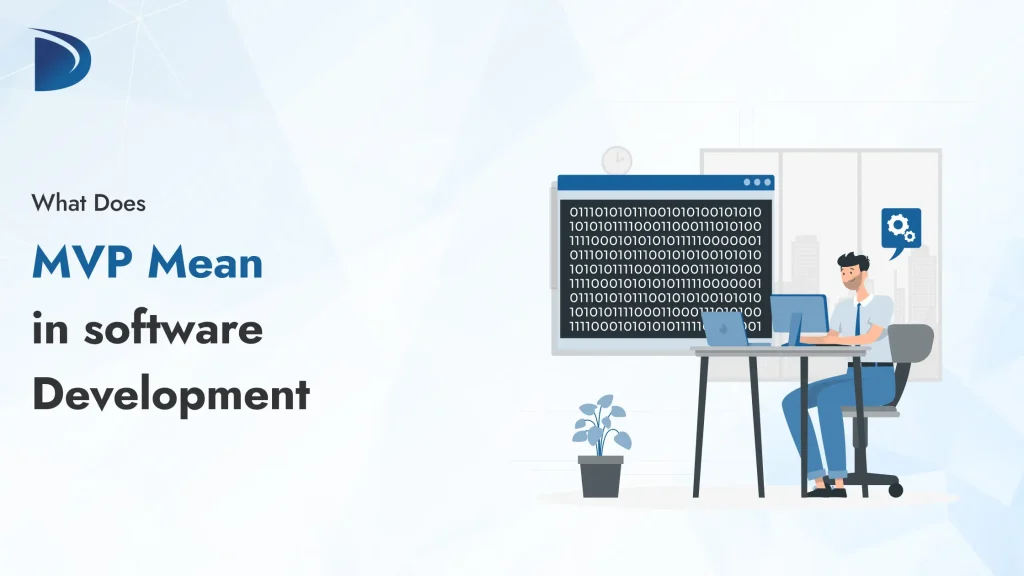Table of Contents
MVP, in software development, stands for Minimum Viable Product. It’s a simple version of a software product that includes only the most essential features needed to solve a specific problem for users. The goal of an MVP is to test an idea quickly, gather feedback, and improve the product over time. This guide explains what an MVP is, why it’s essential, and how to create one, using clear and easy-to-understand English and a structured approach.
What is an MVP?
An MVP is the basic version of a software product that has just enough features to work and meet the core needs of users. It’s like building a simple skateboard to test if people want a new way to travel before creating a fancy car. The MVP is not the final product; it’s a starting point to learn what users like and what needs to change.
- Purpose: Launch quickly, test the idea, and get user feedback to make the product better.
- For instance, a new food delivery app’s MVP might allow users to browse restaurants and place orders, but not include advanced features like live order tracking or custom meal plans. This approach was successfully adopted by [successful food delivery app] when they launched their MVP, which helped them quickly validate their idea and gather user feedback.
An MVP is different from a prototype or a fully developed product:
- Prototype: A rough model to show how the product might work, often not functional.
- MVP: A working product with minimal features, ready for real users to try.
- Full Product: A complete version with all planned features and polished design.
Why is an MVP Important?
Creating a minimum viable product (MVP) is a smart and efficient approach in software development, especially during the early stages of MVP software development.
Here’s why it matters:
- Efficiently saves Time and Money: By building only the core features, an MVP is a faster and more cost-effective approach than developing a complete product, making your software development process more resourceful and prudent.
- Agile Testing of Ideas: An MVP enables you to quickly determine if users are interested in your product before investing significant effort, making your software development process more agile and responsive.
- Honest Feedback, Real Guidance: Users try the MVP and share what they like or want improved, providing you with real, actionable feedback that guides future development, making your software development process more informed and guided.
- Reduces Risks: If the idea doesn’t work, you lose less time and money compared to building a complex product.
- Attracts Investors: A working MVP demonstrates to investors that your idea has potential and genuine user interest.
For example, if you’re building a note-taking app, an MVP might let users create and save notes. If users love it, you can add features like sharing or tagging later based on their feedback.
Key Characteristics of an MVP
A good MVP has these qualities:
- Minimal: Includes only the most essential features to address the primary issue.
- Functional: Works well enough for users to try and give feedback.
- User-Focused: Designed to meet the needs of the target audience.
- Scalable: Built in a way that allows adding more features later, without compromising the core functionality. This means that as your product grows, you can continue to add new features and improve existing ones, while always keeping the core features that make your product unique and valuable to users.
The MVP Development Process
Creating an MVP follows a clear process to ensure it meets user needs and project goals. Here’s a step-by-step guide:
1. Identify the Problem and Users
Start by understanding the problem your product will solve and who your users are. This helps you focus on what’s most important.
- Tasks: Research the market, talk to potential users, and define the problem.
- Example: “Students need a simple way to organize study notes across devices.”
- Goal: Know the problem and target audience.
2. Define Core Features
List the minimum features needed to solve the problem. Avoid adding extra features that can be included later.
- Tasks: Brainstorm features, prioritize the essentials, and create a shortlist.
- Example: For the note-taking app, core features might include creating, saving, and viewing notes.
- Goal: Focus on the smallest set of features that makes the product usable.
- Tool: Use a prioritization method like MoSCoW (Must-have, Should-have, Could-have, Won’t-have).
3. Plan the MVP
Create a plan for building the MVP, including a timeline, budget, and team roles. Decide on the technology and tools to use.
- Tasks: Set deadlines, assign tasks, and choose programming languages or platforms.
- Example: Plan to build the note-taking app in 4 weeks using JavaScript and a cloud database.
- Tools: Trello, Jira, or Notion for project management.
- Goal: Have a clear roadmap for development.
4. Design and Develop
Design a simple user interface and write the code for the MVP. Focus on functionality, not perfection.
- Tasks: Create wireframes (basic layouts), code the core features, and maintain a minimalist design.
- Example: Build a basic note-taking app with a text box for writing notes and a “Save” button.
- Tools: Figma for wireframes, React or Python for coding.
- Goal: Build a working product quickly.
5. Test the MVP
Test the MVP to ensure it functions properly and is user-friendly. Fix any bugs or issues.
- Tasks: Run tests to check functionality, usability, and performance.
- Example: Test if notes save correctly and load without errors.
- Types of Testing: Manual testing (trying it yourself) or automated testing (using scripts).
- Goal: Ensure the MVP is reliable for users.
6. Launch to Users
Release the MVP to a small group of users, such as early adopters or beta testers. This can be accessed through a website, app store, or a private link.
- Tasks: Deploy the MVP, monitor its performance, and prepare to collect feedback.
- Example: Share the note-taking app with a group of students via a website link.
- Goal: Get the MVP into users’ hands.
7. Collect Feedback and Iterate
Listen to what users say about the MVP. Use their feedback to decide what to improve or add next.
- Tasks: Gather feedback through surveys, user interviews, or app analytics.
- Example: Users might say, “I want to organize notes by subject.” We plan to add this feature to the next version.
- Tools: Google Forms, Hotjar, or Mixpanel for feedback.
- Goal: Learn what works and what doesn’t to make the product better.
8. Improve and Expand
Based on feedback, update the MVP by fixing issues or adding new features. This process repeats as the product grows.
- Tasks: Prioritize updates, develop new features, and release improved versions.
- Example: Add a feature to categorize notes and improve the app’s design.
- Goal: Develop a more robust product that effectively meets user needs.
Standard Tools for Building an MVP
Teams use various tools to create and manage an MVP:
- Wireframing: Figma, Balsamiq, or Sketch for designing layouts.
- Development: JavaScript (React, Node.js), Python (Django, Flask), or no-code platforms like Bubble.
- Project Management: Trello, Asana, or Jira will be used to track tasks.
- Testing: Selenium, Postman, or manual testing for quality checks.
- Feedback: Google Forms, Typeform, or analytics tools like Google Analytics.
- Deployment: Heroku, Firebase, or AWS for hosting the MVP.
Best Practices for a Successful MVP
To make your MVP effective, follow these tips:
- Focus on One Problem: Solve a single, clear problem for users. Don’t try to do too much.
- Keep It Simple: Include only the must-have features to launch quickly.
- Know Your Users: Build for your target audience and test with real users.
- Launch Early: Get the MVP to users as soon as it’s functional to start learning and gathering feedback.
- Listen to Feedback: Pay attention to what users say and use it to inform your improvements.
- Plan for Growth: Build the MVP in a way that allows for easy addition of features later.
- Measure Success: Set specific goals, such as “100 users try the app in the first month,” to track progress.
Challenges of Building an MVP
While MVPs are helpful, they can have challenges:
- Too Few Features: If the MVP is too basic, users might not see its value.
- Too Many Features: Adding extra features can delay the launch and increase costs.
- Unclear Goals: Without a clear problem to solve, the MVP might fail to attract users.
- Poor Quality: If the MVP has too many bugs, users may stop using it.
- Ignoring Feedback: Failing to act on user feedback can result in a product that users don’t want.
To avoid these issues, define clear goals, thoroughly test the MVP, and keep it focused and functional.
Real-World Examples of MVPs
Many successful products started as MVPs:
- Dropbox: Launched with a simple file-sharing tool that lets users sync files across devices. Later, they added features like team collaboration.
- Airbnb: Started as a basic website where hosts could list rooms and guests could book them. Additional features, such as reviews and filters, were added later.
- Uber: Began with a simple app connecting drivers and riders in one city, with basic payment and booking features.
These companies utilized MVPs to test their ideas, gather insights from users, and evolve into major platforms.
Conclusion
MVP Development is a powerful way to start a software project. An MVP, or Minimum Viable Product, involves building a simple, working version of your idea so you can test it with real users, save time and money, and improve based on feedback. The key to effective MVP Development is to focus on solving one problem, keep the features minimal, and listen to what users say.
Whether you’re a beginner or an experienced developer, embracing MVP software Development helps turn ideas into successful products. Follow the steps: identify the problem, build the core features, launch, iterate, and you’ll be on your way to building software users love.

